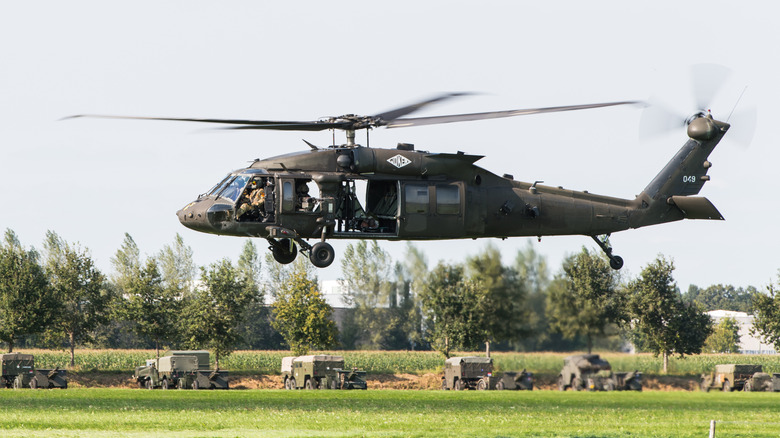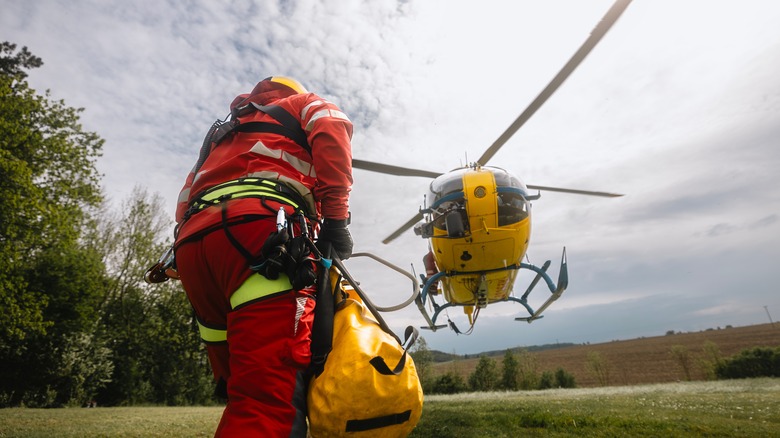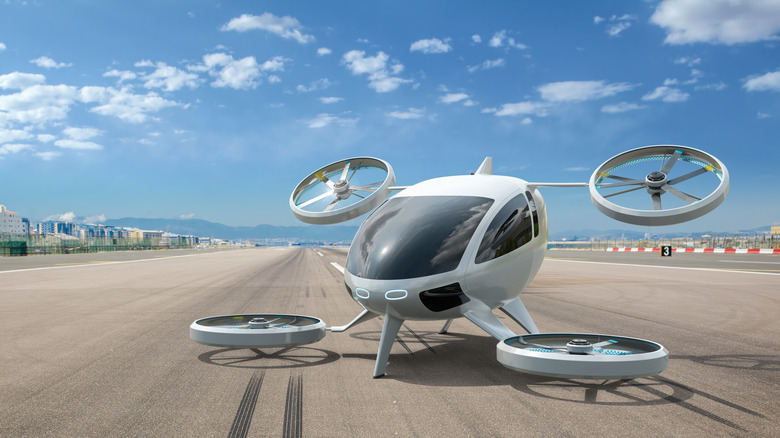Are More Blades Better On A Helicopter?
The number of blades a helicopter has is very important because it speaks to what the helicopter was designed to do. For example, adding more blades can significantly improve a helicopter's performance, increasing its lift efficiency and flight stability. That's because having more blades spreads the workload between all of the helicopter's wing tips, allowing it to carry higher payloads and have smoother flight. However, having more blades also typically involves a more complicated system and can be more expensive. Additionally, helicopters with more blades are typically less agile than those with fewer.
The Robinson R44 is a light civilian helicopter that uses a two-blade setup for simplicity, as is the Vietnam-era Bell UH-1 Huey, one of the most iconic military helicopters in history. In contrast, military transport helicopters like the CH-53E Super Stallion use seven blades to make carrying massive loads easier. Meanwhile, the AH-64 Apache attack helicopter has four blades designed for stability, balance, and maneuverability.
Blade counts have evolved over time
During the Cold War, helicopters needed more blades to carry more weight. Rotorcraft such as the Mi-26 used eight blades while maintaining a manageable-sized rotor disc relative to its immense lifting capacity. Combat helicopters were upgraded for modern needs, increasing the amount of blades to improve stability, increase payload capacity, and minimize vibration so as not to damage the precision avionics. The two-bladed Huey was replaced by the Black Hawk with four blades, dramatically increasing mission performance and capabilities. Afterward, the U.S. rolled out the ultimate attack helicopter, the AH-1Z Viper, which also has four blades.
There are many differences between military and civilian helicopters, and that includes how many blades they have. Medical or civilian helicopters often adopt more blades to enhance comfort and to meet urban noise restrictions. Using more blades to share the workload decreases the wake or air disturbance caused by the blade tips, resulting in less noise and less of that characteristic "thump-thump" sound you hear from helicopters. The Airbus H145 recently changed from four to five blades, cutting noise and vibrations down to a minimum while also adding about 330 pounds to its lifting capacity.
Next-generation helicopters are designed with even more capabilities
Engineers are always looking for ways to implement new technology on helicopters blades to balance power, stealth, agility, and comfort. The Hughes 500P "Penetrator", nicknamed "Quiet One," is a stealth five-bladed helicopter that can fly on covert missions with a minimal acoustic signature that reduces detection by a factor of 6:1. The Airbus H160, a luxury private helicopter starting at $14 million, has swept tips to increase efficiency while staying noise-compliant over cities with stricter ordinances.
Advanced helicopters like the Sikorsky S-97 Raider utilize coaxial multi-blade rotors to make them fly more like airplanes. The eVTOL (electric vertical take-off and landing) air taxi, on the other hand, uses multiple small rotors to achieve safe, stable, and quiet vertical flight. Even as technology continues to evolve, the number of blades a helicopter has continues to be a key factor in determining its overall performance.


